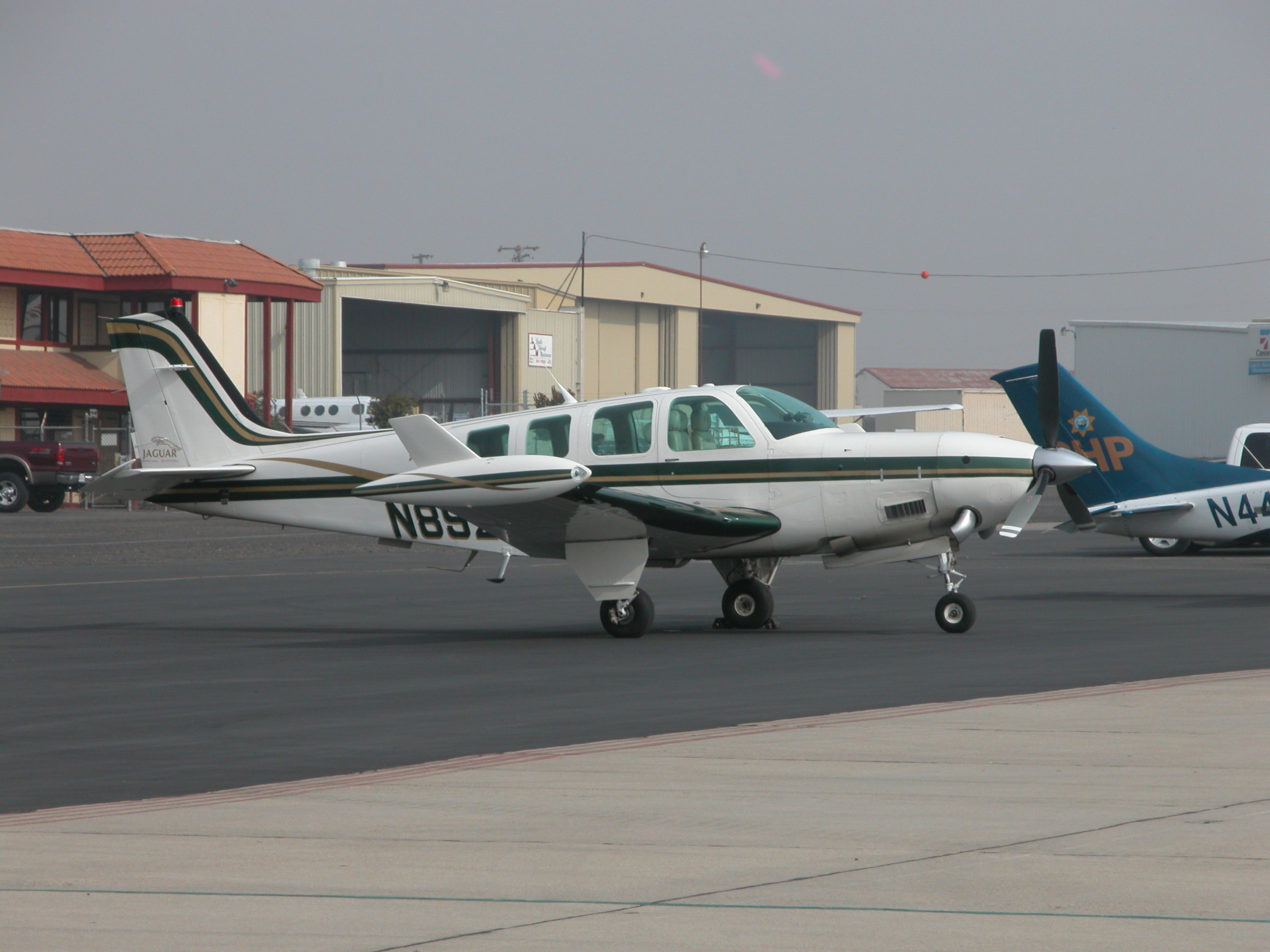
With the introduction of this airplane, the base price had roughly quadrupled over the original 36: $160,700 ($361,208 in 2013 dollars) with a current average value of $155,000. Gone was the trademark Bonanza “throwover” control wheel with its massive central column in favor of a pair of ordinary control yokes. There was an all-new (and very well laid out) instrument panel. The biggest change to the normally aspirated airplane came in 1984, when a 300-HP Continental IO-550 replaced the IO-520. The changes punched up range by 50 percent. It was longer, for better performance at altitude and carried 102 gallons of avgas. In 1982 Beech released the B36TC, which used the Baron 58 wing. Only 272 were sold in three years, as pilots complained about having only 74 gallons of fuel aboard when the engine wasn’t exactly fuel efficient. With a 300-HP Continental TSIO-520-UB, equipped with a variable absolute pressure controller that automatically maintained manifold pressure during altitude and temperature changes, the airplane showed a lot of potential. Responding to the call for turbocharging, Beech introduced the A36TC in 1979. By 1976, an autopilot was standard, along with what is now a basic IFR suite. An 80-gallon system was made standard in 1980.Īs the years passed, the basic Beech A36 Bonanza remained largely unchanged, though in keeping with its real-world mission-a personal user’s IFR platform-more and more equipment was made standard. We believe it’s highly unlikely that there are any standard-capacity A36s in the fleet. Standard capacity actually went down to only 44 gallons, with a 74-gallon extended range system available. Many of the “luxury” options became standard equipment. The marketing focus changed, positioning Beech’s A36 more as a larger version of the other Bonanzas rather than as a utility airplane. In 1970, the A36 Bonanza debuted with the popular club seating option. Of course, the original 36 could be outfitted with options like a more plush interior. The Beech 6 Bonanza could even be flown with the rear doors removed. This was in contrast to the Beech V-tail Bonanza, which was sold as an upscale business airplane. The 36 Bonanza was aimed at the utility and charter market dominated by Cessna, as a good choice for air taxi and cargo hauling. The length was added in such a way that the cabin moved forward, relative to the wing. The stretch was accomplished by adding 10 inches to the fuselage of a 33 Bonanza the 36 Bonanza was not an all-new airplane. It had some limitations compared to the later models: Club seating was not yet available and the standard fuel capacity was only 50 gallons, with 80 optional. The original Beech 36 Bonanza was equipped with a six-cylinder Continental IO-520-B engine producing 285 HP and swinging a two-blade prop. That same airplane is now worth an average of $90,000. Base price of this first 36 Bonanza was $40,650, which rose to an average of $47,050 equipped ($315,824 in 2013 dollars). The company kept working on a true six-place airplane.įor the 1968 model year, Beech introduced a stretched version of the Bonanza, with six seats, a conventional tail like that on the eight-year-old Debonair (redubbed 33 Bonanza that same year) and an aft set of doors. These were called “family” seats, and they really weren’t suitable for adults.

The V-tail, S35 Bonanza, introduced in 1964, received a 19-inch cabin stretch that permitted the installation of a fifth and sixth seat. Cessna also had the 206 for the utility market.īeech didn’t have a truly comparable airplane. Archrival Cessna had been selling its six-place retractable single, the 210, since 1960 and by the end of the 1967 model year had rolled 936 through the factory doors. Base price of the first models was $7975 ($33,539 in 2013 dollars).īy 1967, Beech had a gaping hole in its model lineup. The 35 Bonanza was the first high-performance postwar single and was markedly different from the average light airplane of the day. In one form or another, the Beech Bonanza has been in continuous production since 1947, when the first V-tail was built-an astounding fact in itself.
A36 BONANZA PERFORMANCE SPECS MODS
Aftermarket mods to the Beech Bonanza such as turbonormalizing and tip tanks can turn a 36-series Bonanza into an airplane that can carry four people 1000 NM at 200 knots. Easy entry to the rear seats and club seating made them popular with passengers as well as pilots, even though the aft CG limit can make loading a challenge and some turbocharged models are a little light on useful load.

Prices on the used market reflect the high regard for the airplanes.

Since 1968, the Beech 36-series Bonanzas has steadily built a solid record for workmanship, performance, handling and comfort.


 0 kommentar(er)
0 kommentar(er)
